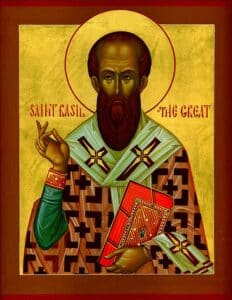St. Thomas Aquinas lived from 1225 to 1274 and was of noble birth. St. Thomas Aquinas was a brilliant author whose brilliance was foretold, before his birth, by a hermit and soothsayer. St. Thomas Aquinas disappointed his family, who imprisoned him, on his way to becoming a saint and a doctor of the Catholic church. He may have been the most influential thinker of all time, and he defined many of the practices that billions of Catholics have done since his death more than 700 years ago. Can you name a more influential thinker than Aquinas?
Biography of St. Thomas Aquinas

The son of Landulph, count of Aquino, Saint Thomas was born about 1225 in Roccasecca, Italy, near Aquino. That is where he got his name. He had eight siblings and was the youngest child. His mother, Theodora, was Countess of Teano in Italy. His family members were descendants of Emperors Frederick I and Henry VI. Before St. Thomas Aquinas was born, a holy hermit predicted to his mother, saying that her son would enter the Order of Friars Preachers, become a great learner, and achieve unequaled sanctity.
As was common at the time, St. Thomas Aquinas was sent to the Abbey of Monte Cassino to train among Benedictine monks when he was only 5 years old. In Wisdom 8:19, St. Thomas Aquinas is described as “a witty child” who “had received a good soul.” At Monte Cassino, the quizzical youngster repeatedly questioned his benefactors, “What is God?” St. Thomas Aquinas remained at the monastery in Monti Casino until he was 13 years old, when he returned to Naples.
He was ordained in Cologne, Germany, in 1250, and went on to teach theology at the University of Paris. There, under the tutelage of Saint Albert the Great, Saint Thomas Aquinas earned his doctorate in theology. Consistent with the holy hermit’s prediction, Thomas proved an exemplary scholar, though, ironically, his modesty sometimes led his classmates to misperceive him as dim-witted; they called him the dumb ox.
After completing his education, Saint Thomas Aquinas devoted himself to a life of traveling, writing, teaching, public speaking, and preaching. A prolific writer, he wrote almost 60 works we know, ranging in length from short to tome-like. Handwritten copies of his works were distributed to libraries across Europe. This was before the invention of the printing press, which occurred in about 1440. His philosophical and theological writings ranged from commentaries on the Bible and discussions of Aristotle’s writings on natural philosophy.
Written from 1265 to 1274, Saint Thomas Aquinas’s Summa Theologica is largely philosophical, and then he wrote Summa Contra Gentiles, which, while still philosophical, comes across to many critics as apologetic. In June 1272, Saint Thomas Aquinas went to Naples and started a theological studies program at the Dominican house neighboring the university. While he was still writing, his works began to suffer somewhat.
During the Feast of Saint Nicholas in 1273, Aquinas had a vision that made writing seem unimportant to him. At Mass, he heard a voice coming from a crucifix that said, “Thou hast written well of me, Thomas; what reward wilt thou have?” to which Saint Thomas Aquinas replied, “None other than thyself, Lord.”
Conclusion
Shortly after he died in 1274, Saint Thomas’s writings rose to public acclaim and reinforced a strong following among the Dominicans. Universities, seminaries, and colleges used the Summa Theologica as the leading theology textbook. The influence of Saint Thomas Aquinas’s writing has been so great that an estimated 6,000 commentaries on his work exist today. Often called “The Universal Teacher,” Saint Thomas Aquinas died at the monastery of Fossanova, Italy, on March 7, 1274. He was canonized by Pope John XXII in 1323.








